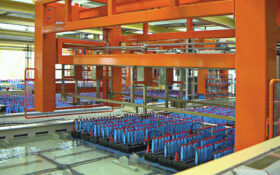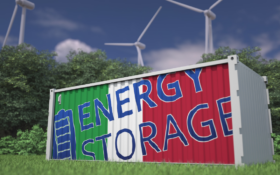Scientists from the University of Southern California claim to have built a redox flow battery based on low-cost and readily available materials.
The key innovation involves using different fluids: an iron sulfate solution anD Anthraquinone disulfonic acid (AQDS), an organic material already used in some redox flow batteries for its stability, solubility and energy storage potential.
In tests conducted on laboratory cells under 5Ah, the researchers found the iron-AQDS battery showed a capacity fade rate of 7.6 × 10−5% per cycle over more than 500 cycles in the symmetric cell configuration. This symmetric cell also showed a notably high average coulombic efficiency of 99.63%.
The team is now raising funding to perform a scaled-up demonstration of a 3kW/24kWh system for behind-the-meter applications.
The study was published in the Journal of the Electrochemical Society.
Another benefit is iron sulfate is cheap (around $0.10 for two pounds) and abundant while large-scale manufacturing of AQDS would cost about $1.60 per pound, say the researchers.
That means material costs for the type of battery developed by the USC scientists would cost $66 per kWh.
Sri Narayan, professor of chemistry at the USC and lead author for the study, said: “We have demonstrated an inexpensive, long-life, safe and eco-friendly flow battery attractive for storing the energy from solar and wind energy systems at a mass scale.
“To date, there has been no economically viable, eco-friendly solution to energy storage that can last for 25 years.
“Lithium-ion batteries do not have the long-life, and vanadium-based batteries use expensive, relatively toxic materials, which limits large-scale use. Our system is the answer to this challenge. We foresee these batteries used in residential, commercial and industrial buildings to capture renewable energy.”












